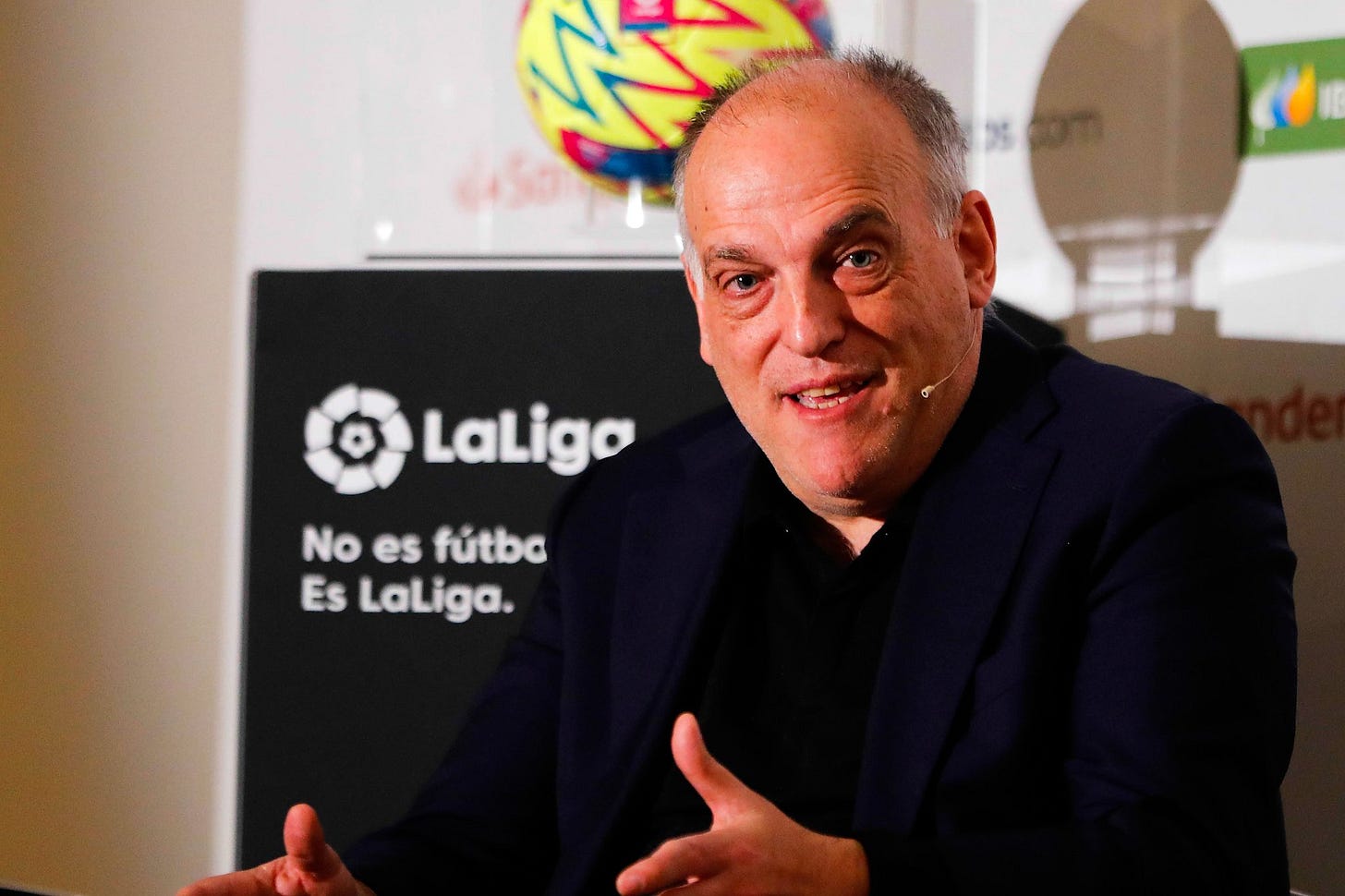LaLiga 2024 summer transfer window: A resurgence in spending but still far from Premier League powerhouse
The 2024 summer transfer window has closed, and while LaLiga remains dwarfed by the Premier League in terms of sheer financial power, this summer's activity signals a promising resurgence for LaLiga.

Spanish clubs collectively spent €555.59 million, marking a substantial increase from the €397.85 million invested during the same period in 2023. This €157.74 million surge is a clear indicator that LaLiga is striving to regain its footing in the highly competitive European transfer market.
Signs of a recovery
The €555.59 million spent this summer closely mirrors the expenditure of the 2022-23 season, which saw €560.34 million invested in new talent. Both seasons represent a rebound from the more cost-conscius years that followed the lavish spending sprees between 2017 and 2019, when LaLiga clubs spent a staggering €3.43 billion across three summers, peaking with €1.51 billion in 2019-20. The pandemic era brought sobriety, but the 2024 summer window offers hope that Spanish clubs are once again ready to compete on a larger scale.
However, it’s important to note that LaLiga still lags behind its European counterparts in terms of transfer market influence. Despite the increased spending, the league ranks last among Europe’s top five leagues, with the Premier League once again leading the charge with a colossal €2.34 billion outlay.
Premier League: The unchallenged giant
The Premier League’s dominance in the transfer market continues to set it apart from the rest of Europe. Even though English clubs have slightly reduced their spending compared to last year, their total of €2.34 billion remains unparalleled. The introduction of the "Squad Cost Rules" (SCR), designed to curb excessive spending by capping squad costs at 85% of a club's income, has slightly tempered the Premier League’s spending spree. Yet, their financial might remains unmatched, as they comfortably surpassed the €1 billion mark for the eleventh consecutive season—an achievement only matched six times by other major leagues, including LaLiga.
Serie A, Ligue 1, and Bundesliga: Holding steady
Italy’s Serie A maintained its position as the second-highest spender this summer, crossing the €1 billion threshold for the fourth time in its history. In contrast, Ligue 1 and the Bundesliga saw more modest movements in their spending patterns. Ligue 1 showed signs of growth spending a total of €722.81 million, while the Bundesliga went back almost a €100 million from €695.93 million to €600.48 million.
Real Madrid and Barcelona: Missing giants in the market
A significant factor that shaped LaLiga’s overall spending landscape this summer is the relative inactivity of its two biggest clubs, Real Madrid and Barcelona. Traditionally, these giants are the heavy hitters in the transfer market, often responsible for the league's most eye-catching deals. However, that haven’t been the case for FC Barcelona in recent years.
Still to this day, the Catalans continue to struggle with the repercussions of Financial Fair Play regulations in LaLiga and its ongoing economic challenges. The Catalan club, which once set the standard for aggressive spending, were once again forced to be far more restrained this summer. Their marquee signing was Dani Olmo, brought in from RB Leipzig for €60 million. While Olmo is undoubtedly a high-quality addition, the transfer highlights the limitations Barcelona currently faces, as they were unable to bring in other players such as Nico Williams and João Cancelo.
Real Madrid on the other hand adopted a more strategic approach, choosing to play the long game with Kylian Mbappé. The French superstar, long linked with a move to the Bernabéu, finally arrived on a free transfer from Paris Saint-Germain and Florentino Pérez thereby avoided a potential world record fee for the 25-year-old Frenchman. This decision not only avoided a massive outlay but also had a dramatic impact on the overall spending of the LaLiga clubs overall.
Julián Álvarez: The most expensive signing of the summer
In a summer filled with high-profile transfers, Atlético Madrid’s acquisition of Julián Álvarez from Manchester City for €75 million stands out as the most expensive deal across Europe. The Argentine forward's move not only bolstered Atlético's attacking options but also positioned the club as the top spender among Spanish teams, with a total outlay of €180 million. This spending spree placed Atlético Madrid 11th globally in terms of net transfer spend, with a net outflow of €91.5 million, further highlighting the club's ambition to compete at the highest level.
English clubs dominate the top spenders list
The financial prowess of the Premier League is evident when looking at the list of the top-spending clubs. Six English clubs are among the top ten spenders, with Chelsea leading the pack after spending €238.5 million. A club such as Brighton spent an enormous €231.2 million. Atlético Madrid is the sole representative from LaLiga in this elite group, reflecting the ongoing disparity between Spanish clubs and their English counterparts in terms of financial muscles.
LaLiga’s path forward
While LaLiga’s spending this summer shows signs of recovery, the league still faces significant challenges in closing the financial gap with Europe’s top leagues, particularly the Premier League. The relative transactional inactivity of Real Madrid and Barcelona, traditionally the league’s financial powerhouses, played a significant role in keeping LaLiga’s total expenditure lower than it might have been but overall it still looks difficult to compete with the English league when you have clubs such as Brighton spending almost half of the total of all LaLiga club’s combined.
The next few seasons will be crucial as LaLiga strives to balance financial caution with the need to attract top-tier talent, all while navigating the broader economic landscape of European and global football.



